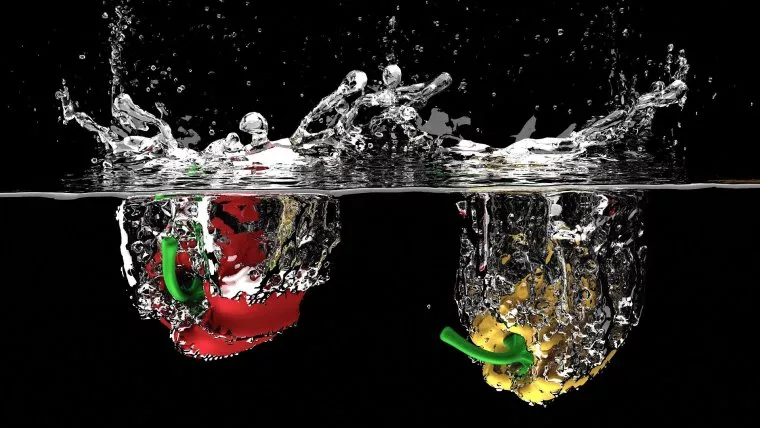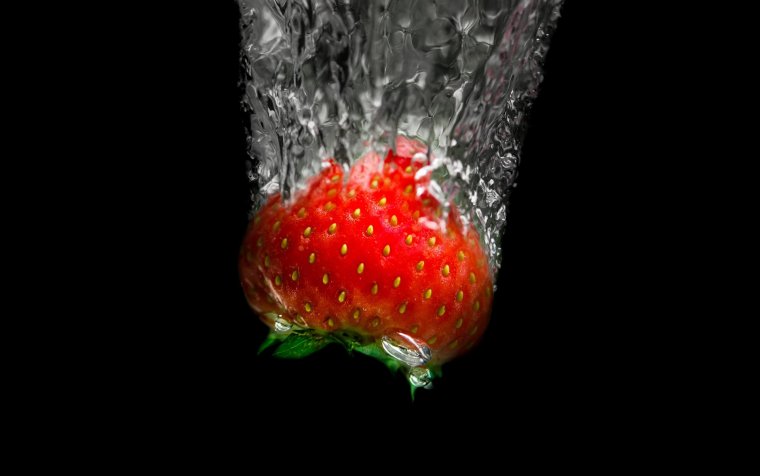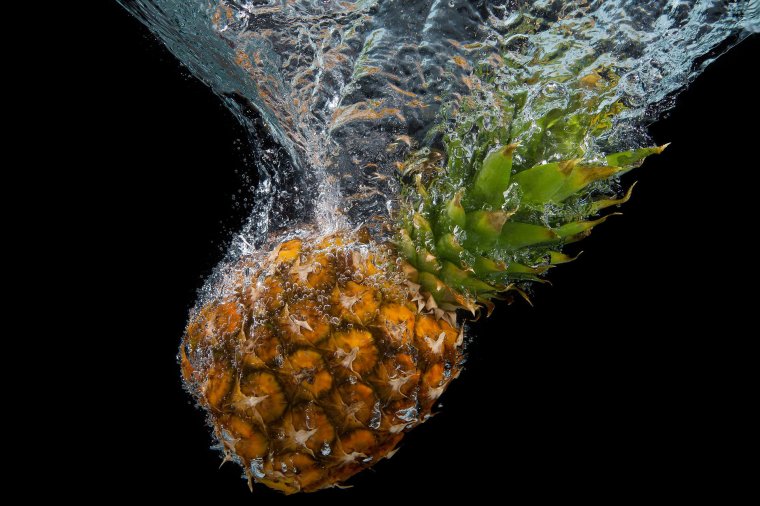
What I’m going to offer to you today would be how to freeze a moment, reproducing the illusion of motion with a bowl of water and a piece or whole fruit. In another word, today subject is Fruity Splash photography.
It is not an ordinary photography; I consider this type of photos as a special effect photos.
So let’s begin. A friend of mine is planning to open a smoothie store and asked me if I could make some fruit pictures for him. I did not want to make simple ordinary dead nature photos, and that’s how I came up with an idea for this kind of photos.

You don’t, need much of equipment. A tripod and a remote shooter, average macro lens, a Speedlite flash unit or two, a transparent bowl, and cardboard background (I prefer black background) will be enough. Back in the days when my brother had an aquarium, we had different kinds of problems with the tap water, so I used bottled water just to get rid of all the bubbles on the inner side of the bowl.
The setup is the most important. First, the surface will be flooded with water from all the splashes, so be prepared to clean and keep a towel close to you. The camera should be set to cover only the bowl and the background. Then get your flashes ready. If you have only one flash, you should consider having an additional reflector or a bright light. They should be set on the both sides of the bowl, not in the front or the back of the bowl. This creates a great effect and is visible on both the glass and water. Buy many different kinds of fruits just to have many objects for shooting. Also, you can make two photos with one fruit if you shoot the whole fruit and a second photo when sliced. If you ask me Lemons and other citrus fruits are the best because of the freshness, they bring in to the photography.
Now we are talking about the camera settings. Use aperture form f/4 to f/8. I found that f/5.6 works great. For the shooter speed, you should use anywhere between 1/125s up to 1/250s, but you should experiment on this and find what is best for you. The ISO is also something that is negotiable, I used ISO 400, and it was just fine. The request from my friend demanded that I use RAW format rather than JPEG, and that is what I always prefer to use for something like this. For this setting, the autofocus works great, so manual or auto-focus does not make any difference. The white balance is set on flash. Finally connect the remote shooter because we don’t need any vibrations on the camera, and make sure that the camera is away from the bowl because nobody wants to splash water on the camera and the lens. It is a must that you use the continuous burst shooting or a timer mode.

The only thing left is that you drop the fruit in the bowl. But wait, it is not that simple. This is where patience is the key to success, and it is the fun part for this kind of photography. You will need to master the art of pressing the shutter with your left hand, waiting for the timer to end, then dropping the fruit with your right hand and firing the flash with your left hand. The timing is essential, and you will miss a fruit or two just to figure out when to press the button or to drop the fruit. Be sure that you don’t drop the fruit from a location that is too high; it will create a big splash that the camera may not capture, along with that, it can create a mess in your home studio. With practice, you will determine the height for the drop, and you will get the perfect photo. After your first success, things get easy. I find that you get the best splash in the photos if you trigger the flash as the fruit hits bottom, though this will take a lot of trial and error and you will probably end up with a lot of photos of your fruit hovering over the surface of the water. The key is to take a lot of photos. But after you upload them into your computer you will have to choose only 5 to 10 images, because it’s “impossible” to edit all of them.
Post processing the photos is the next step. This is optional but is recommended.
So that is it, go on and try this beautiful and fun technique.
Comments (0)
There are no comments yet.